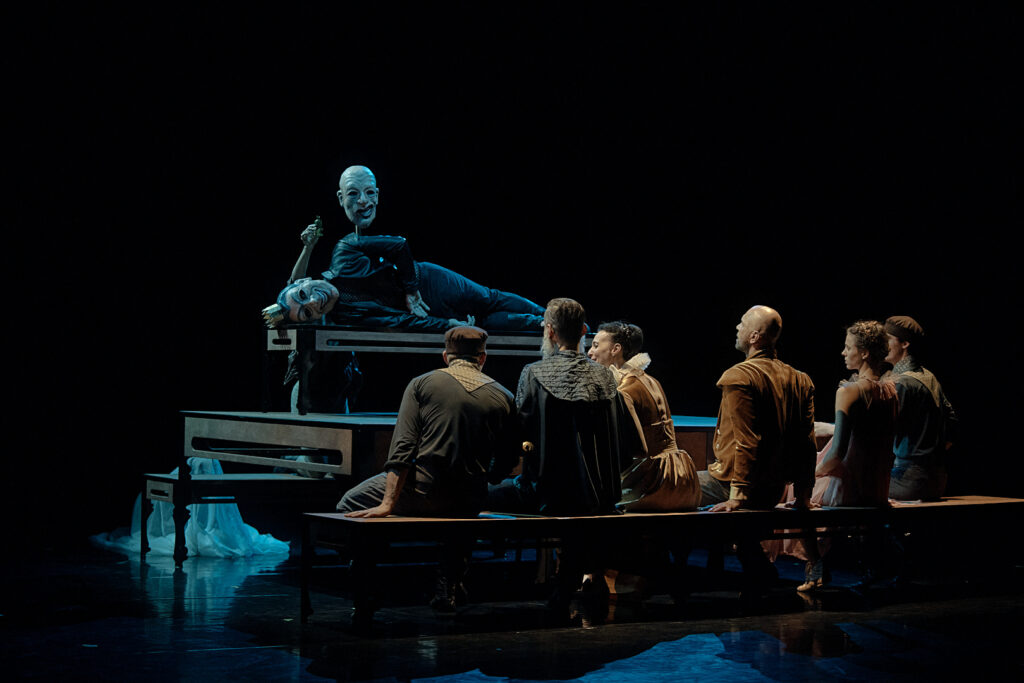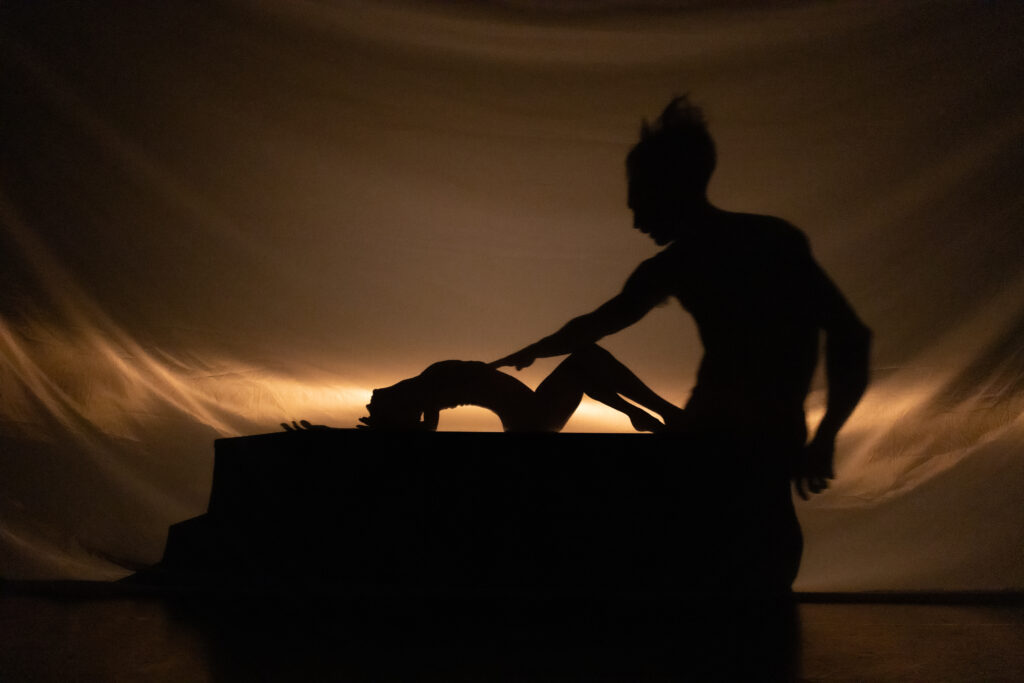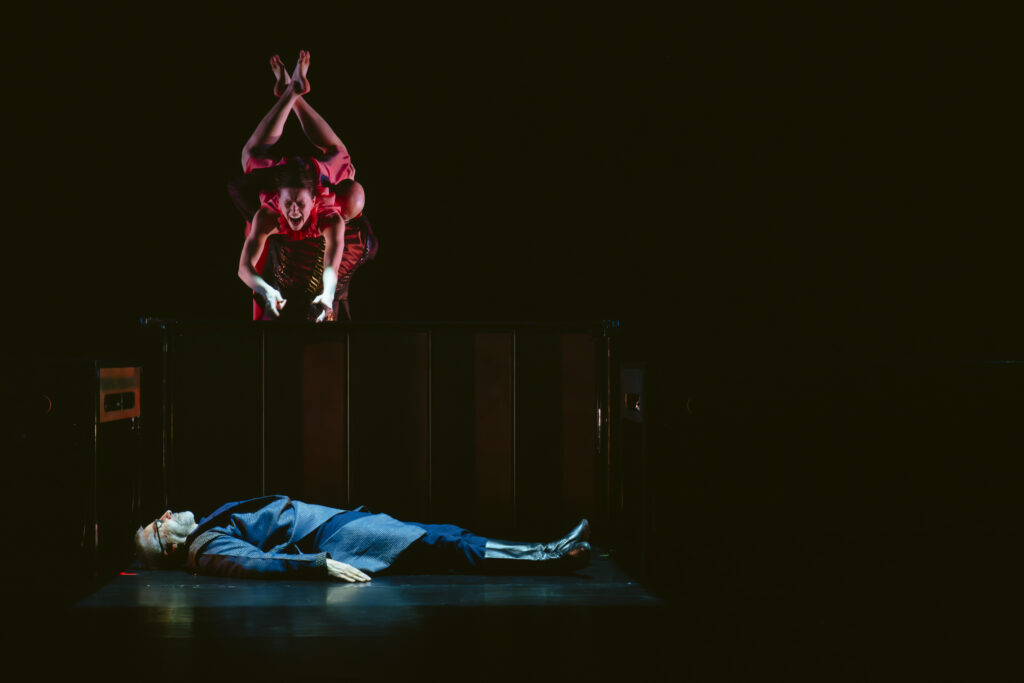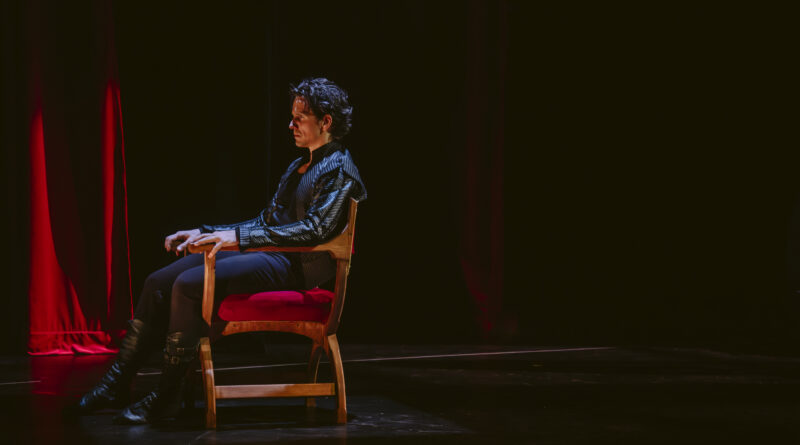The Tragedy of Hamlet, Prince of Denmark
Growing up, Hamlet was always my favourite Shakespeare play. The story always felt captivating, and most relatable (maybe because I was a teen reading about a teen). I have also seen four productions of Hamlet before the one I am writing about, and unfortunately, I was let down by all those productions. It seems like no one had the desire (or the skill) to depict Hamlet’s spiral into madness the way I read it: quietly, and slowly. I’ve been to productions that had Hamlet scream the entire show or had him act zany and kooky instead of quietly spiraling into negative thoughts and actions. Thanks to Robert Lepage, and Guillaume Côté, I can FINALLY say that I’ve seen a production of Hamlet that really, truly got to the core of this emotionally wrecked character, and the people around him. In case you decide to stop reading here, let me just say that if you appreciate dance, theatre, Shakespeare, or just art in general, you MUST see this production. You would be doing yourself a disservice not buying a ticket immediately.
The Tragedy of Hamlet: Prince of Denmark is created by Ex Machina, Côté Dance, and Dvoretsky Productions, and presented by Show One Productions. This production is not Robert Lepage’s first venture into the realm of Hamlet’s Shakespeare. In 1994, he created a piece called Elsinore, where he played every character in the play. This production was a critical hit and went on to live out in different formats. Lepage is also no stranger to folding in his love of filmmaking and dance with the art of dance, creating another incredible piece called Frame by Frame which ran with the National Ballet. Paired with dance legend Guillaume Côté, it truly is a match made in theatre heaven.

“As Guillaume always says, ‘The opening night is just the beginning’” Creative Assistant and Rehearsal Director Anisa Tejpar, who treated the audience to an intimate pre-show chat about
the show. This production, two and half years in the making, really was a creative child of Côté, and Tejpar was beyond thrilled to be a part of the process of bringing this production to light with her longtime friend Guillaume. However, the production is a living thing, with changes even being made the night prior, which were all folded in seamlessly. The other thing she made us aware of, was how many different styles of dance were embraced for this show besides ballet, and I appreciated that. These choices made the show way more interesting to look at and paired so well with the interesting instrumentation throughout the show (which was a blend of historic sounding instruments like the lute with more modern ones like electric guitars, random buzzing, and modern drums”.
Now, I will say that the production took a few liberties with the story, so one must come into it not with the expectation that it’s going to be a “word for word” re-telling, but rather an interpretation of the beloved play. The question I had walking into the theatre was, “How are they going to interpret a piece of written literature, that has been celebrated for hundreds of years, and re-tell it through movement and dance?” Well let me tell you, it’s only through the mind-meld of Côté and Lepage that we can have such a virtually stimulating, but emotionally moving piece like this.

The show begins at the end where, spoiler alert, everyone is dead. One of the things I appreciated the most about this production was how simple the set was, and how incredibly powerful the use of curtains, sheets, and projections were. After the opening moment, the stage is cleared, leaving Hamlet alone. A curtain moves slowly across the stage, revealing the wedding party for King Claudius, and Queen Gertrude, which appeared on stage as if by magic. Immediately we are hit with an array of dance styles, from ballet (of course) to contemporary, hip-hop, jazz, musical theatre, and more. It was so expertly delivered that it felt so smooth and incredibly natural.
The next notable scene, the ghost scene, was outstanding and gorgeously creepy. The purpose of the ghost in the play is to reveal how the King was killed by his brother Claudius, but of course, it had to be shown, and not told, which was done with brilliance. Another INCREDIBLE scene is one that I saw in promotions, but seeing it in real life was something else: The play within a play. For those who don’t know, in Shakespeare’s Hamlet, a troupe of actors are hired to play out a scene where a king is killed by his brother via poison, done in an effort to oust Claudius. What I never realized was that Hamlet (Côté) and Horatio (Natasha Poon Woo) put on masks on the back of their heads and have all their movements done towards the audience, while they are facing the back of the stage. Essentially, they did everything backward. This created a marionette-like effect, and was so much more interesting than seeing performers just play out a scene.
I appreciated that this production had a spotlight on all the major characters too, and I wanted to give out some special shout-outs. Obviously, Guillaume Côté is incredible. He played Hamlet in a way that was so nuanced, and so honest, giving lots of depth to the character. I truly believe that Carleen Zouboules who played Ophelia stole the show. My most favorite scenes (other than the ghost scene and the play within a play) always involved her. She brought such beauty to the character and depicted her innocence, and her trauma beautifully. The scene with her losing her mind (which involved a beautiful choreography with mirrors), the death of Ophelia, and Ophelia’s funeral were breathtaking. The drowning scene alone was worth the ticket price. It was a gorgeous piece of movement using Ophelia, a giant blue curtain representing the crashing waves, and hidden dancers behind the curtain. It was an exercise in trust, and precision, leading to a BEAUTIFUL scene. The funeral scene in its own right was stunning. Without giving away too much, in the scene she appears to be flung around truly like a dead body, but I know through dancer friends how difficult it is to make it appear like you are doing nothing at all while using sheer core strength to support your fellow dancers. . Lukas Malkowski, who played Laertes also brought light to a character who we really don’t care too much about traditionally until the second act. Malkowski did an exquisite job blending so many different styles into his interpretation of the character: breakdance, capoeira, contemporary, and ballet. Watching him dance was an immense joy.
Horatio played by Natasha Poon Woo played the best friend everyone needs: loyal, dedicated, and grieved deeply when his friend dies in the end. Woo’s also must have had a microphone on her, because there were these intense moments where the music went quiet, and all you could hear was the laboured breaths that come from incense dancing, which added another element to an already stacked production. Connor Mitton and Willem Sadler who played Rosencrantz and Guildenstern were the comedic relief we needed in this show. Their moments, perfectly in sync with each other, were light and playful. Honestly, in the best way possible, they definitely channeled the spirit of Tweedle Dee and Tweedle Dum, and watching them act a fool on stage was a joy.

Greta Hodgkinson as Gertrude was a fascinating exploration on being in the centre of being a mother and a new wife. She wants to celebrate her son and keep him from harm, while enjoying her new husband, and handling grief. There also appears to be an interesting depiction of guilt for when Ophelia dies, maybe because Gertrude feels a sense of responsibility. Polonius, played by Bernard Meney, was also a more interesting character in this version, appearing more power hungry and villainous than the book version. Robert Glumbek’s performance of Claudius however was truly fascinating. Through cleaver lighting, we get to see HIS descent into madness. I always saw Claudius as evil and conniving, but I have never seen him be paranoid, and panicked in a way that Glumbek was able to convey.
It’s funny, you’re not going to love everything in every performance, and or for me, it was the depiction of the relationship between Hamlet and his mother Gertrude, and Laertes and his Sister Ophelia. It felt way too romantic, and sensual and honestly was at times uncomfortable to watch. I was content with just being uncomfortable with the imagery, until I ran into both Guillaume Côté and Anisa Tejpar after the show. I gushed about how much I loved the show, but the relationship between these characters was unsettling. He explained to me it was an intentional choice because some readers believe there is almost an Oedipus Rex complex to their relationship, and the same can be said about Laertes’ love of Ophelia. Honestly, this made complete sense and though it still was a little uncomfortable, it really spoke to how deeply the creative team thought about this production. Bravo.
I have said this in reviews before, but I have seen hundreds of productions over the course of my lifetime, something I am insanely thankful and grateful for, but this production has earned a spot in my top 10 productions list. Hamlet has an incredibly short run, and tickets are running out fast, so make sure you secure yours today!
Shakespeare’s HAMLET, making its World Premiere in Toronto at the prestigious Elgin Theatre from April 3 through April 7, 2024
[Review by Shan Fernando]

